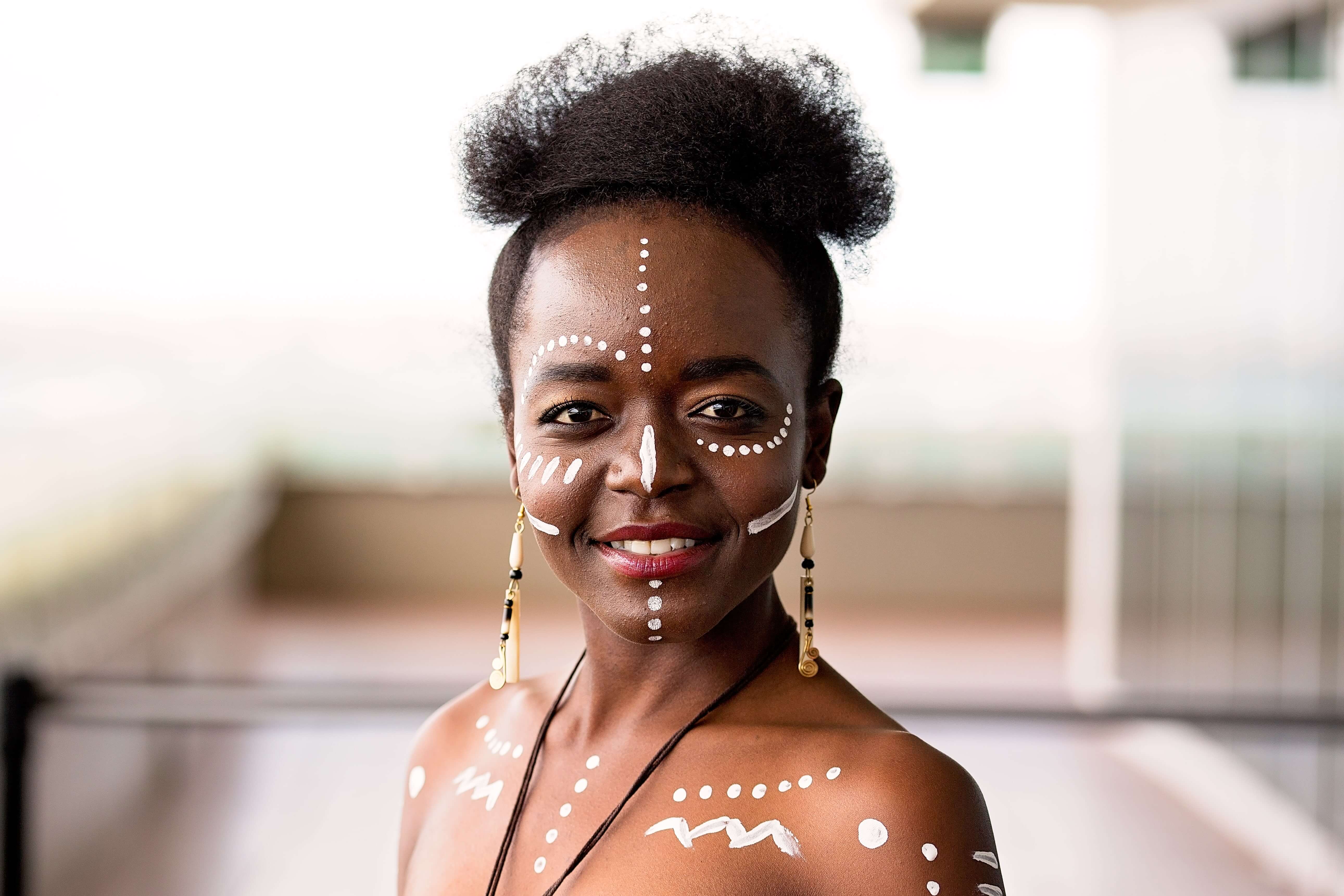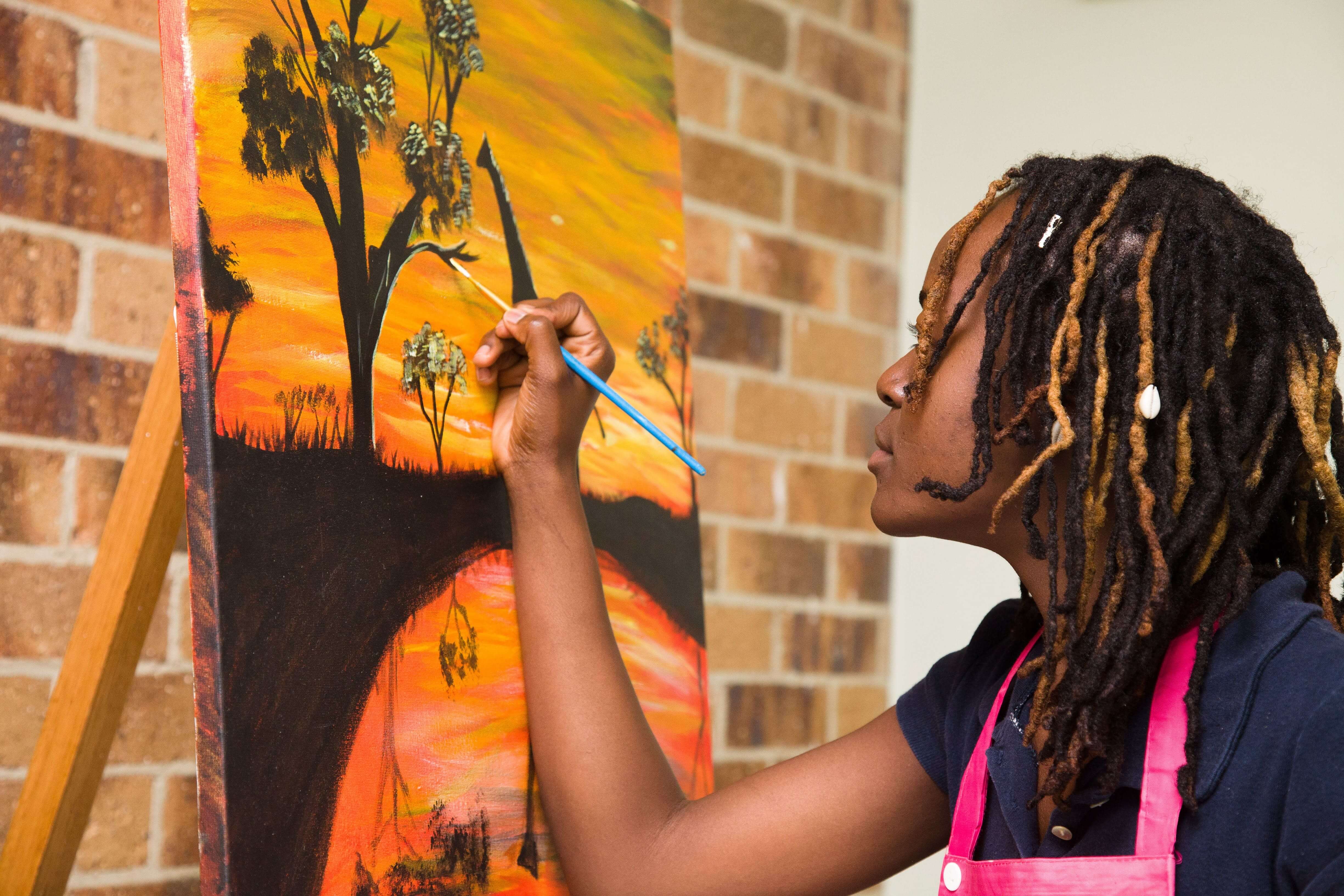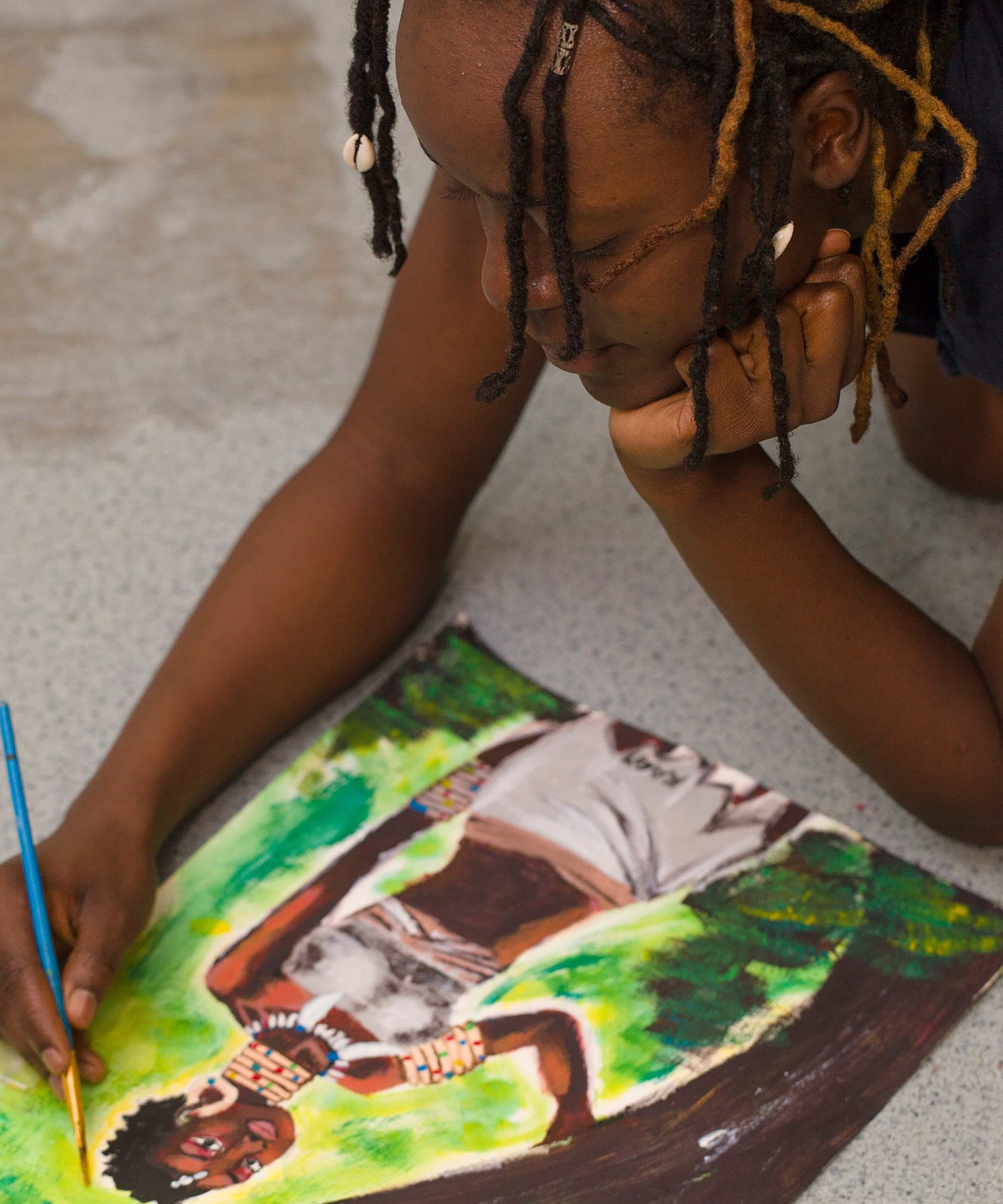
Until I was forced to leave my home, I never questioned what ‘home’ meant.
I was forced to consider my identity when I came here, to Australia, because as a woman of colour in Queensland, I stood out.
When I first landed in Australia I remember I was so nervous. But also I was just really hot. “What is this weather?” I thought being from Sudan I knew what heat was, but nothing compares to the beautiful Brisbane summers.
My cultural background is tribal Indigenous African from the Nuba Mountains, we are the Indigenous people of Sudan. Until I was forced to leave my home, I never questioned what ‘home’ meant.
I was forced to consider my identity when I came here, to Australia, because as a woman of colour in Queensland, I stood out. I was looked at and treated as ‘the other’. I found it very hard to reconcile my sense of self. Suddenly placed in a new culture and no one looked like me. I was constantly questioning who I was and how I fit in this new place.

Until I was forced to leave my home, I never questioned what ‘home’ meant.
I was forced to consider my identity when I came here, to Australia, because as a woman of colour in Queensland, I stood out.
That began to shift one day at a train station in Ipswich when I saw an Aboriginal art mural. It changed everything. I stood in front of it and considered the colours and patterns. They reminded me so much of the Indigenous art from home. I stood and stared at it for so long that I missed my train. It stirred something inside of me. I felt a connection. Something shifted inside of me and I thought: ‘I have to paint’.
I had never painted before. I went to a supply store but I had no idea what to buy, so I felt the brush on my skin to imagine its effect on the paper. The shopkeeper probably thought I was insane. I rushed home and did what every twentysomething does to learn a new skill , I went to YouTube. Through video tutorials I learnt create shape and light, pair colours and use the right brush. I learned to paint.
I became obsessed with all Australian Indigenous art. Wherever I went I would try to find galleries with Indigenous art. Albert Namitajira, probably Australia’s most famous painter, was a particular inspiration. Although his paintings were seemingly in the ‘western style’, they had a hidden meaning. He did something that no one was expecting.
I was painting a lot. To both clarify and express my sense of identity. The first time I showed a piece at an event someone asked to buy it. I was shocked. I had no idea how to price it, so I sold it for $15.
I became obsessed with all Australian Indigenous art.
Wherever I went I would try to find galleries with Indigenous art.

A few months later I held a solo exhibition of twenty six pieces. It was incredible to see others connecting and drawing their own meanings from my work. Sixteen of the pieces sold, making it the most successful show the gallery had ever held. I was over the moon.
It was mind blowing. But I don’t feel the need to create art just to sell, I mean it was great that people could appreciate my work, but felt like I needed more than that. And that was to connect with people. I want others to feel the joy of expression through art that I have, so now I host art workshops. I start the sessions by talking about my journey to Australia, my culture, and my identity.
I am using art as a platform to stimulate conversations, to connect people to others but also to themselves. I love watching people pick up a paintbrush for the first time and see their nervous strokes grow more confident as they loosen up. That is what art does to you, it frees your mind and allows you to connect with yourself.

But I don’t feel the need to create art just to sell, I mean it was great that people could appreciate my work, but felt like I needed more than that. And that was to connect with people.
Art is a tool that I used at a time when I was so lost. Almost all of my closest friends I have met through art and I feel that I am really part of a community.
I never had a constant physical experience of ‘home’ – so I can’t define home through belonging to the physical – rather I define it as belonging to people, a community. And I’ve been lucky to find that community through arts, that’s how I’ve met many of my closest friends.
It’s the people around you that make home. Friends that you share things with. Being able to be yourself.
I’m grateful that my artwork can be a stimulant for others to share their voice and their story. I think empowering others is the most satisfying achievement, and that’s what I’m trying to do in my job at the ASRC.
I am a community organiser based in Brisbane. I’m responsible for building a grassroots movement with refugees at the centre to fight for systemic change at a policy level.
My role day to day, is about having conversations. It’s about challenging the misconceptions and answering the mistruths as well as creating awareness of the plight of refugees and people seeking asylum.
We are seeing the narrative shift. People are starting to question the policies and politicians who have have been vilifying refugees and people seeking asylum.
And we also now have politicians asking questions. Challenging the status quo. They’re educating themselves and are swapping sides to stand with us – that’s huge. I think that change is possible. I have seen that change is possible.
We have to start listening to people with lived experience of seeking asylum. Their stories and lives are important. They’re worth hearing and worth fighting for.
I want an Australia where everyone feels free and comfortable in their skin, where they feel they belong – and that’s what motivates me. Be it through art or in my role community organising, that’s what I’m working towards.

If you empathise with Kagi’s story and you want to find out tips and ways to make the workforce more welcoming for refugees, fill out the form and download the resource.
You can also get in touch through the form by leaving a message of welcome for Kagi.
The ASRC would like to acknowledge the Wurundjeri and Bunurong people of the Kulin Nation as traditional owners and custodians of the land on which the ASRC stands. We acknowledge that the land was never ceded and we pay our respect to them, their customs, their culture, to elders past and present and to their emerging leaders.
This landing page is part of the campaign ‘Welcome Refugees into the Workforce’; an awareness campaign created as part of a partnership between ASRC and Yarra Trams which provides free tram wraps to community organisations making a positive impact on diversity and inclusion in Melbourne. The ASRC’s WELCOME tram wrap will feature on a wrapped tram that will travel on tram routes 48 and 109 in Melbourne from June to September 2023.